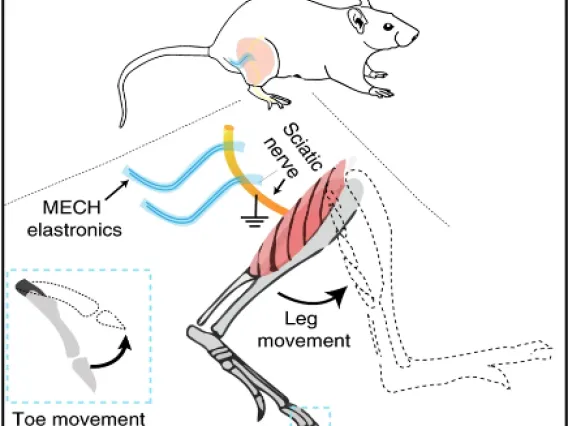Our multidisciplinary approach combines electrical and chemical engineering with the fundamentals of cellular and biomolecular processes in wound healing directed towards high resolution, in situ tissue regeneration. We are building a first-of-its kind regenerative bandage that can deliver real time personalized wound care.
For both projects, our collaborative team consists of experts in electrical engineering, bioengineering, chemical engineering, computer science (we use AI – machine learning), and clinicians. Our research has a translational focus, and we are moving towards deploying our products in the clinic.
Read more about our work in the Wall Street Journal: https://www.wsj.com/tech/biotech/smart-bandages-wound-healing-32a2b802

Regeneration of cutaneous tissue
Approximately thirty million people in the United States suffer from diabetes. The prevalence of diabetic foot ulcers (DFUs) in this population is 13%. While interventions for DFUs exist, including growth factors, extracellular matrix, engineered skin and negative pressure wound therapy, these treatments are only moderately effective. The ideal would care technology would be able to (i) create a moist and clean environment; (ii) protect the wound bed from trauma and infection; (iii) be non-toxic and non-allergenic and (iv) deliver therapeutic compounds essential for healing.
Current standard of care wound dressings is passive and cannot actively respond to variations in the wound environment. As a consequence, patients require more frequent hospital visits, increased wound monitoring and add to the treatment cost and stress on medical centers. Smart bandages are well positioned to address these challenges with their ability to integrate different types of (bio)sensors for real-time monitoring and active wound care treatment.

Regeneration of injured nerve tissue
Peripheral nerve injuries represent the second leading cause of disability, affecting 20 million Americans resulting in approximately $150 billion spent in annual health care costs in the U.S. Severe nerve injuries leave a devastating impact on the patients’ ability to move and sense, and often lead to intractable neuropathic pain. When the nerve is damaged and is unable to regenerate across an injured plane, permanent loss of sensation is inevitable. Even in cases where direct primary nerve repair is possible, long-term recovery is often unsatisfactory with incomplete sensory and motor function recovery. Peripheral nerve injuries are debilitating, resulting in patients unable to resume daily functional activity or maintain a normal quality of life. There remains a pressing need to develop effective devices to promote neuro-regeneration at the site of injury.
Our team is combining electrical engineering and bioengineering, using novel biocompatible technologies to design and build new methods of augmenting the healing parameters, enabling for accelerated nerve regeneration and maximal functional recovery of an injured area. We are building a novel nerve regenerating bandage that will allow for accelerated nerve regeneration, significantly extending treatment past the intraoperative period.
Related Publications
Jiang Y, Trotsyuk AA, Niu S, Henn D, Chen K, Shih CC, Larson MR, Mermin-Bunnell AM, Mittal S, Lai JC, Saberi A, Beard E, Jing S, Zhong D, Steele SR, Sun K, Jain T, Zhao E, Neimeth CR, Viana WG, Tang J, Sivaraj D, Padmanabhan J, Rodrigues M, Perrault DP, Chattopadhyay A, Maan ZN, Leeolou MC, Bonham CA, Kwon SH, Kussie HC, Fischer KS, Gurusankar G, Liang K, Zhang K, Nag R, Snyder MP, Januszyk M, Gurtner GC, Bao Z. Wireless, closed-loop, smart bandage with integrated sensors and stimulators for advanced wound care and accelerated healing. Nat Biotechnol. 2022 Nov 24. doi: 10.1038/s41587-022-01528-3. Epub ahead of print. PMID: 36424488.
